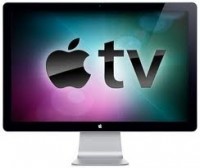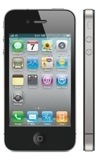Is Apple on the verge of dominating the digital movie market and revolutionizing television, as well? Those answers are “looks like it” (digital movies) and “outlook cloudy” (television viewing).
When it comes to digital movie sales, Apple already controls 65% of the market, according to research by IHS Screen Digest. Now as as Apple expands digital offerings into the cloud via iCloud, it threatens to dwarf Hollywood’s own UltraViolet cloud initiative with the only credible challenge coming from Amazon and Google, not the movie industry.
“If they do this right, Apple is in the lead position,” James McQuivey, an analyst with of Forrester Research told “TheWrap” (http://macte.ch/G8qU4). “They’re already in a strong position. The dark horse here is Amazon, not UltraViolet.”
UltraViolet is a cloud-based movie storage solution that the industry is betting (or at least hoping) will convince consumers to buy movies instead of renting them. How? The “digital locker” solution keeps copies of films you’ve bought on remote servers for viewing any time on various devices. Last month Walmart announced that it would offer a service to turn physical DVD/Blu-ray collections across the U.S. into digital movies.
UltraViolet was designed to promote digital ownership as opposed to the streaming or rental market dominated by Netflix or Redbox. It was also intended to prop up sagging disc sales by adding digital rights to DVDs and Blu-rays.
But so far it hasn’t caught on. According to “TheWrap,” in January, its backers announced that roughly 750,000 accounts had been set up, much fewer than analysts had anticipated. The system, some customers complained, is overly complicated. What’s more, Apple isn’t offering UltraViolet purchases on its iTunes store.
“The studios’ fondest wish is that iTunes comes on board and becomes an UltraViolet licensee and starts providing stuff that is compatible with what everyone else is selling,” Tom Adams, principal analyst and director of U.S. media for IHS Screen Digest, told “TheWrap.”
For now, the studios don’t seem to mind that Apple may cannibalize its own cloud project, the article adds. Sony, Disney, Lionsgate, Warner Bros and Paramount have reached agreements with Apple. Fox and Universal are expected to follow suit in the next few months once they renegotiate licensing deals with HBO that are preventing them from releasing their films to the cloud, according to an individual with knowledge of the talks.
With Apple’s help, studios hope they can convince consumers into once again building video collections, this time in the cloud, just as they once had DVD libraries in their homes. And we movie lovers enjoy having our own collection. Personally, I like having films I’ve bought in both physical (you still can’t beat Blu-ray for the utmost in quality) and in the cloud.
So when it comes to digital movies, Apple is in the best possible position. As for dominating the world of television, that’s going to take some work, though the industry needs a good shake-up. Folks like me are unhappy with their cable and satellite bills, in which we pay for channels we never watch. Plus, the prices seem to jump every couple of months. And that doesn’t look like it will change.
According to “USA Today” (http://macte.ch/4oU8o): Some may be cutting the cord, but those who are keeping their pay TV service can expect to pay more.
Monthly pay TV rates have grown about 6% annually, which should bring the average bill — currently about $84 — up to $123 per month by 2015 and $200 by 2020, according to data from the NPD research group (http://www.npd.com).
“As pay-TV costs rise and consumers’ spending power stays flat, the traditional affiliate-fee business model for pay-TV companies appears to be unsustainable in the long term,” NPD research director Keith Nissen told “USA Today.” He adds that the challenge from streaming video services such as Netflix “might be the spark that ignites the necessary business-model transformation of the pay-TV industry.”
Still, despite the popularity of Netflix and other streaming services such as Hulu, consumers remain devoted to pay TV services, according to the NPD report based on 1,000 consumer households surveyed quarterly and another 10,000 consumers surveyed semi-annually. More than six out of 10 (62%) want premium TV services delivered by their pay TV provider or a service affiliated with their provider. Only 20% were likely to cancel their pay TV service, even if they could get their favorite shows online.
“Pay-TV providers offer a convenient, one-stop shop for subscribers, and the majority of customers like it that way,” NPD’s senior vice president of industry analysis Russ Crupnick told “USA Today.” “There is an open window for the industry to meet consumer needs and become to television what iTunes is to music; however, there is also a definite risk if pay-TV providers don’t capitalize on the opportunity — and soon.”
Eighty-four percent of U.S. homes subscribe to pay TV services. The economic downturn and mortgage crisis resulted in five million fewer U.S. households viewing pay TV services, NPD says. However, the total pay TV subscriptions haven’t dipped much despite the economy, the research group adds.
So can Apple revamp the industry with its rumored HDTV (the “iTV” or “iPanel”). Perhaps, but the company has its work cut out for it. In a note to clients — as reported by “Deadline” (http://macte.ch/XLq3r) — BTIG analyst Rich Greenfield says not to expect such a device this year.
Not that Apple doesn’t have an opening. The user interfaces and remote controls from TV manufacturers and pay TV companies “are horrible – they are the polar opposite of intuitive and they certainly don’t ‘just work’,” Greenfield told “Deadline.”
However, the media ecosystem is “quite complex and requires a lot of agreements between parties that are still trying to figure out if they are friends or enemies or somewhere in between.” His advice to Apple: start off by developing a device for satellite companies DirecTV and Dish Network that would redesign the look and feel of the viewing experience. That would provide national reach” and pressure cable companies to play ball.”
“Once a consumer upgrades their living room TV, they are going to want to replicate that experience on other TVs throughout their home” — opening the way for Apple to sell its own TV set — Greenfield tells “Deadline.” He even envisions a way for Apple to offer a rival pay TV service via the Internet.
“If Apple is willing to take all the content (meaning no cherry picking the best channels) from each content owner at a premium price (figure $40+ per sub/month compared to Comcast’s rate of around $30/sub/month), we believe a significant number of programmers would agree to license programming” to Apple, he says.
Greenfield is probably onto something. However, I still think that at some point in the future — sooner rather than later, hopefully — consumer demand and online competition will result in “a la carte” TV programming options. In other words, folks like me will play for the 20-30 channels we actually watch, not for 100-plus channels, most of which we could care less about.
— Dennis Sellers



